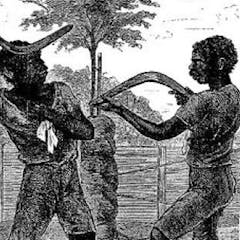
Articles on Paris
Displaying 21 - 40 of 109 articles

As the new series of Emily in Paris drops, an expert in cultural depictions of the city asks – where are all the Parisians?

It’s riddled with cliches and a dislike of a certain type of “Americaness”.

France’s ‘renewed partnership’ with Algeria may be less about exploring a difficult and painful past and more about pressing political concerns.

Cultural omnivores are economically and culturally privileged people who can enjoy both “highbrow” and “lowbrow” cultural products, like good and bad coffee, simultaneously.

It’s one of the most common expressions used in French but also one of the most controversial. A linguist explains why “pas de souci” is no mere English import.

The first restaurants in Paris were based on the medicinal powers of soup, but these establishments soon transformed into the temples to gastronomy we know today.

As a concert pianist, Scott Davie has been searching for the spirit of Chopin since his teens. It’s taken him to Paris and Majorca and channeled tantalising notes through time.

An Italian media scholar raised on American TV assesses Netflix’s ambitious strategy to create original productions in Italy, Japan, Brazil and beyond – and distribute them globally.

The need for social distancing sparked a cycling boom, cutting air pollution and boosting city dwellers’ mental and physical health. But when the pandemic ends, will it be back to life as usual?

Stephen of Tournai wanted Denmark to pay damages for Viking raids on France three centuries before.

In 19th-century France, even photographs of hospitals and bridges could become propaganda.

As the Black Lives Matter movement has , statues of figures linked to slavery have been removed. Such actions are just symbolic, however. What is at stake is the systemic transformation of the present.

In Namur, Belgium, archaeological excavations were almost buried for good under the cover of lockdown. The incident draws attention to weaknesses in archaeological heritage protection systems.

An art historian uncovers the truth about Marthe Bonnard, for decades labelled as a jealous recluse with a neurotic need to bathe.

The neighbourhoods of Paris, Barcelona and Amsterdam with densities 3-5 times those of Melbourne and Sydney offer an insight into how we could transform our cities for the better.

More than 1 billion euros were donated after Paris’ cathedral was grievously damaged by fire in April. By comparison, just a few million euros were given after catastrophic flooding in Cité des Doges.

Ladj Ly’s critically acclaimed new film looks at the misery that binds together its protagonists, and also examines France’s failure to fulfil its obligations toward its most vulnerable citizens.

In major cities around the world, dockless scooters and bikes are everywhere, yet the companies themselves are often breathtakingly short-lived. Basic economic concepts give us clues why.

Research behind a new novel about “human zoos”, which took Indigenous Australians on tours of Europe, shines a light on a little-known part of colonial history.

His legacy connects a great swathe of modern popular culture.
